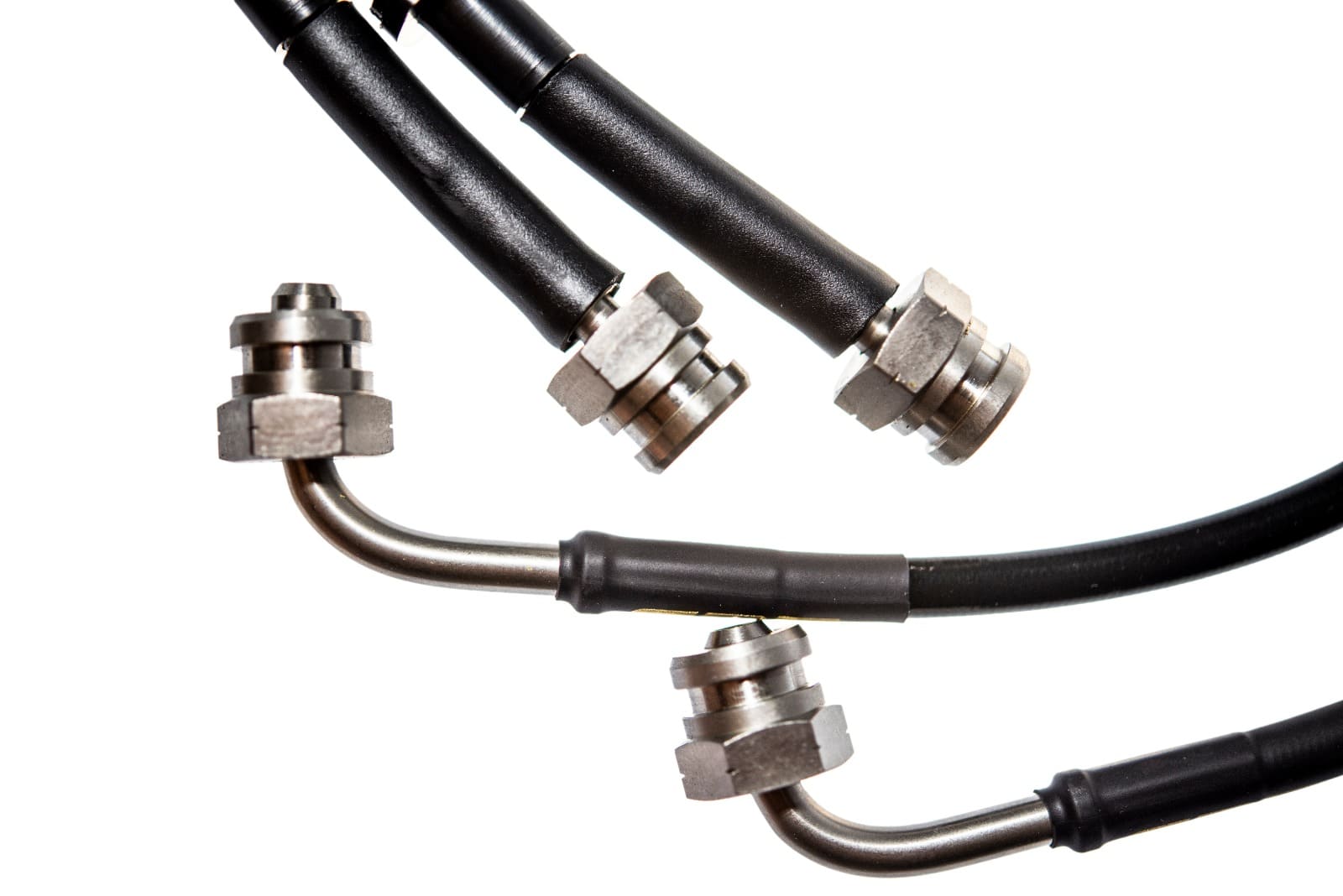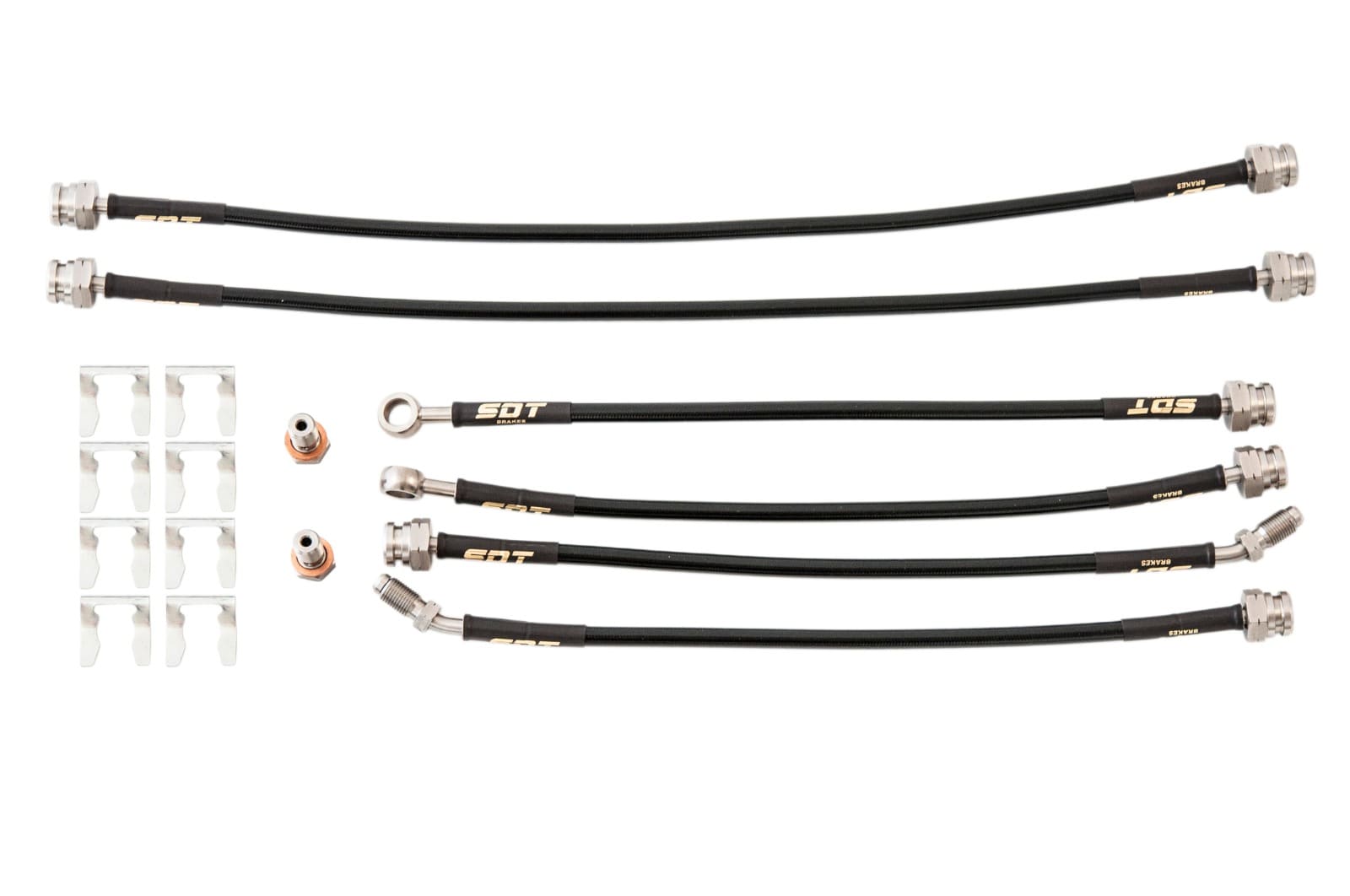- Noticias
- 27757 views
When you step on the brake pedal of your car, it's not magic that makes your vehicle stop. Instead, your car has carefully calibrated pressure valves, called brake lines, that let the car know when you want to slow down. These hoses are thin tubes filled with pressurized air that connect the master cylinder in the cabin to the brake calipers via the wheel cylinders and brake pads. The main purpose of brake lines is to transfer pressure from one point to another while at the same time protecting the sensitive inner workings of your braking system from dirt and moisture. Avoiding an accident due to a faulty brake line can be as simple as learning more about it. Read on to learn everything you need to know about brake lines and the best way to maintain them. You can also contact SDT Brakes for any questions: remember that in the web catalog you will find spare parts for cars and vehicles in general.
What are brake lines?
Thebrake lines are thin, flexible tubes that transfer pressure from the master cylinder to the wheel cylinders and from these to the calipers. Brake lines are usually made of rubber or a combination of rubber and synthetic materials, but there are also metallic brake lines. They vary in length, diameter and appearance, depending on the specific braking system of each vehicle. The main purpose of brake lines is to transfer pressure from one point to another and, at the same time, protect the sensitive inner workings of your braking system from dirt. and humidity. To understand how they do it, you first have to know how the brake system works.
The metal hoses are designed to withstand high temperatures, pressure and tension. Metal brake lines are metal tubes specifically designed to be used as brake lines in cars, trucks, trailers and other vehicles. Features of metallic brake lines include metallic exterior, high heat resistance, high strength, oil resistance and abrasion resistance. Keep reading to learn more about metal hoses and their main characteristics.

What metals are commonly used to make metal hoses?
The metals used to manufacture metal brake hoses are aluminum, stainless steel</ strong> and steel. Aluminum, stainless steel and steel are very strong and resistant materials. They also withstand high temperatures very well. This makes them perfect for use in braking systems as this is an application where temperatures are high and expected to rise.
Why should the brake lines be changed?
As mentioned above, brake lines are thin and flexible, but they are not indestructible. Like any rubber product, they can harden and crack over time, extending the life of the brake hose beyond its useful life. A worn brake hose can have very dangerous consequences, such as the inability to fully apply the brakes, the decrease in the braking power of your car and even cause an accident. To avoid this type of situation, experts recommend checking the wear of the brake lines every 50,000 km or 5 years. If you notice any visible damage or corrosion, if the line is cracked or shows signs of hardening, or if you see the brake fluid level rising, it's time to replace the brake lines. If you want to buy brake hoses, take a look at our page website.

3 brands to trust for your car's brake lines
If you want to avoid a dangerous situation on the road due to a defective brake hose, you should know at which brands to trust for your car's brake hoses. The following three brands are some of the most popular in the automotive industry:
Flow Brite
Flow-Brite has been a respected manufacturer of custom rubber and urethane products since the 1940s. Their products include most of the vital components of your car , including the brake hoses.
Hayes
With over 100 years in business, Hayes has become a trusted and reliable brand, providing high quality parts to regular drivers and professionals.
Gates
Gates has been around since the 1930s, providing not only auto parts, but also products for agriculture, aviation, and even marine vehicles. They are known for the quality of their products, including brake lines.
How often should the brake lines be changed?
As mentioned above, you should check the condition of your brake lines every 50,000 km or 5 years. If there are signs of wear, you should consider replacing it. If your car's brake lines are not replaced when necessary, you run the risk of damaging the rest of the braking system and significantly reducing your car's stopping power. If you notice an abnormal decrease in the effectiveness of your brakes, you should have your brake system inspected immediately to see if the brake lines are the cause.
It's never too late to change your brake lines
Drivers often wonder if it is necessary to change the brake lines of their old and almost retired cars. The short answer is yes. The change of the brake hoses does not depend on the age of the car, but on the mileage and the use made of it. Brake lines are essential components that are prone to wear and therefore require regular replacement. If you drive a vehicle, chances are you hit the brakes every time you get behind the wheel. That means you should also check your brake lines and hoses regularly to make sure they aren't leaking or otherwise in need of repair.
